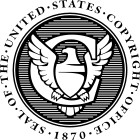By Tom Kurke, COO, Geomagic
Let's take two spoons. One spoon is a simple, yet elegant, functional, well, spoon. It does spoon like things very well. The other spoon is well, also a spoon, but it has patterned and ornate handle. Can either 3D object be protected by copyright?
Copyright Law

Copyright protection in the United States is built around the U.S. Copyright Act and common law interpreting those statutes - but all stemming from the"grant" given to the Federal government found in Article 1, Section 8 of the United States Constitution which states:
To promote the progress of science and useful arts, by securing for limited times to authors and inventors the exclusive right to their respective writings and discoveries.
A lot has changed since the Founding Fathers penned these words, and the scope of protection of what is protectable by copyright have expanded as well (well beyond a"writing").
Copyright protection can be extended to"works of authorship" that are:
- Original - The standard here is very low, but labor and effort is not a substitute for originality.
- Not utilitarian - Copyright does not protect parts of a work that are purely mechanical or functional.
- Fixed in a tangible medium - Copyright protection does not attach to a work that someone has been thinking about but which has not yet been physically represented.
- The"idea-expression dichotomy" - The expression of an idea (or procedure, process, system, discovery, etc.) but not the idea itself is protectable by copyright. As result, if two people were to independently create a work, without access to the other, neither is infringing.
By statute a copyright holder has certain"exclusive" rights, namely the ability to reproduce, distribute, perform, display, license and create derivative works (e.g. adaptations) based on the original work. A copyright is infringed when someone violates one or more of the exclusive rights granted to a copyright holder unless they a defense to infringement (such as"fair use" - limited in scope to non-commercial activities like criticism, use in education, etc.).
As I mentioned above, over time, the scope and duration of copyright protection has constantly expanded. Some of those changes may certainly be characterized as legitimately driven by the need for the law to keep up with the changing pace of technology. I'm not so sure about many other changes however. Two hundred years ago, copyright protection was for a maximum of fourteen years, today copyright protection can extend to the life of the author plus seventy years (works made for hire are ninety-five years from first publication!).
What is protectable by copyright has also morphed - from traditional writings (e.g. books, papers, plays, etc.) to software, and other creative works like sculptures, photographs, drawings, and in some cases even graphic designs, and buildings.
The exact scope of what is protected under copyright varies from country to country -with slight variations in scope - but many of those have been minimized over the past years because of various harmonization conventions (e.g. the Berne Convention).
Back to our Spoons
Remember our two spoons. Both are perfectly good, functional spoons.
It would seem that because a spoon is the essence of something functional or utilitarian - it would not be protectable by copyright.
Unfortunately, however, the analysis is not that simple - because"useful" objects can have both copyrightable and uncopyrightable features. As Fact Sheet Number 103 published by the United States Copyright explains.
A"useful article" is an object that has an intrinsic utilitarian function that is not merely to portray the appearance of the article or to convey information. Examples are clothing; automobile bodies; furniture; machinery, including household appliances; dinnerware; and lighting fixtures. An article that is part of a useful article, such as an ornamental wheel cover on a vehicle, can itself be a useful article.
Copyright does not protect the mechanical or utilitarian aspects of such works of craftsmanship. Copyright may, however, protect any pictorial, graphic, or sculptural authorship that can be identified separately from the utilitarian aspects of an object. Thus a useful article can have both copyrightable and uncopyrightable features. For example, a carving on the back of a chair or a floral relief design on silver flatware can be protected by copyright, but the design of the chair or the flatware itself cannot, even though it may be aesthetically pleasing.
Copyright in a work that portrays a useful article extends only to the artistic expression of the author of the pictorial, graphic, or sculptural work. It does not extend to the design of the article that is portrayed. For example, a drawing or photograph of an automobile or a dress design can be copyrighted, but that does not give the artist or photographer the exclusive right to make automobiles or dresses of the same design.
Uh oh. So, it turns out that at least some aspects of one of the spoons might be copyrightable.
Why does this matter? Because if you were to create a digital copy of the patterned spoon (e.g. capturing via a laser scanner, using photogrammetry, etc.) and then print it on a 3D printer as part of the Capture/Modify/Make ecosystem - you might be unwittingly committing copyright infringement.
In my next blog post I will walk you through additional examples of where and to what copyright protection might apply.
The following are useful sources of information to gain a deeper understanding of Copyright law in the United States:
- http://www.law.cornell.edu/wex/Copyright (Cornell University Law School, Legal Information Institute)
- http://en.wikipedia.org/wiki/Copyright (Good, broad article on Copyright Law around the world)
- http://www.copyright.gov/ (United States Copyright Office) and particularly this series of very useful FAQ documents http://www.copyright.gov/help/faq/ and circulars and fact sheets http://www.copyright.gov/circs/
See prior posts by Tom Kurke on 3D Intellectual Property
Read Tom Kurke's April 2012 post on 3D Intellectual Property